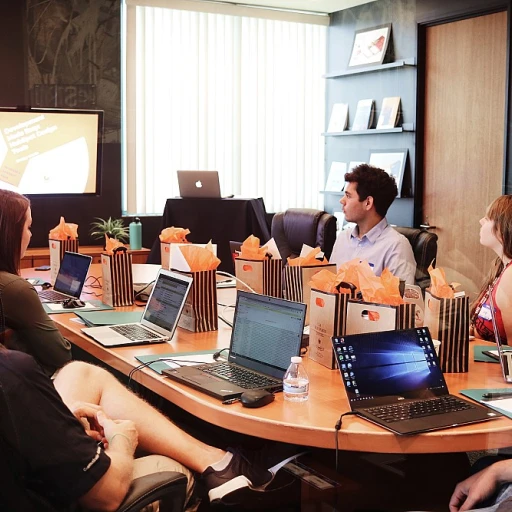
Understanding the Dynamics of Resident Student Associations
Exploring the Environment of Resident Student Associations
Understanding the dynamics within Resident Student Associations (RSAs) involves engaging with a wide range of elements that contribute to a thriving community. Resident students are central to this environment, playing vital roles in hall councils and the larger community framework of residence halls. The RSA is not just an association but a vibrant microcosm of university life, often reflecting the larger campus culture. Being at the heart of residence life, RSAs serve as a pivotal center for developing a sense of belonging among students. They shape residents into active participants within their community, encouraging social, academic, and professional development activities. From organizing upcoming events to addressing public safety and emergency info dissemination, RSAs contribute to creating a well-rounded residential life experience. In addition, these associations provide a structure where students can take on leadership roles, such as becoming resident assistants or serving on the executive board. These opportunities for leadership not only benefit individual students but also enhance the overall vitality of residence life. They foster an environment that drives meaningful social educational interactions, which is crucial for community building. These associations are also key to resource allocation within the halls, ensuring students have access to academic support, community services, and all necessary amenities. Although challenges exist in engaging members effectively, understanding these core elements lays the foundation for developing strategies aimed at boosting engagement, a topic we explore in-depth later in this discussion. To deepen your understanding of communal impact and dynamics, you can explore how building strong bonds among community colleagues enhances engagement in residential settings.Challenges in Engaging Members
Identifying Key Obstacles in Member Engagement
Understanding the challenges faced in engaging members within Resident Student Associations is pivotal to enhancing student community involvement. These challenges often stem from a variety of sources that intertwine with the nuances of residence hall life, impacting the overall experience for resident students.The academic and social environments of university campuses are constantly evolving, requiring RSAs to adapt rapidly to maintain meaningful member engagement. Tempo is a critical factor, as busy student schedules can make it difficult for members to attend hall council meetings and events consistently. It is common for students to be juggling academic responsibilities, extracurricular interests, and part-time employment, all of which can detract from their engagement with the RSA.
Technology has brought notable transformation, yet it poses both as a resource and a challenge. While digital platforms can enhance communication and info dissemination among resident students, over-reliance on digital communication can lead to a sense of detachment in residential life. Face-to-face interactions can sometimes be minimized, affecting the vital sense of community and responsiveness expected in residence halls.
Another significant challenge is the potential mismatch between students' expectations and the RSA's actual offerings, which can include social and educational events. Ensuring that the RSA aligns its activities with the diverse interests of an eclectic student body is crucial. For those involved in leadership roles, such as executive boards or hall councils, maintaining a balance between traditional and innovative programming requires continuous reassessment and adaptability.
Furthermore, limited resources, both in terms of finance and staffing, can restrict the RSAs' capacity to implement expansive initiatives that would invigorate student engagement. Insufficient budgets may delay necessary program development or stunt professional development opportunities for board applications and resident assistants.
The influence of leadership cannot be understated, as it plays an integral role in motivating and inspiring resident students. Addressing leadership styles and the emotional intelligence of those in charge can foster a more engaged, collaborative, and resilient community. Overcoming these multifaceted challenges requires strategic planning and a commitment to exploring new frameworks for involvement, as detailed in this useful resource for navigating team dynamics within collaborative settings.
Strategies for Boosting Engagement
Effective Approaches to Catalyze Member Participation
To enhance engagement within Resident Student Associations (RSA), it is crucial to implement strategies that not only motivate but also resonate with members. Understanding what makes resident students tick, alongside the challenges they face, lays the groundwork for successful engagement.- Building a Sense of Community: Encouraging active participation through community-building activities is a cornerstone strategy. RSAs should consider organizing social, educational, and cultural events that foster interactions among residents. These activities can be powerful tools for integrating students into the university ecosystem and enhancing their residence life experience.
- Utilizing Resources and Support: Leverage available university resources to support campus initiatives. For example, collaborations with campus offices like Public Safety for safety drills, or the Academic Center for workshops, can provide substantial value. This broadens the spectrum of engagement beyond simple social gatherings.
- Promoting Leadership Opportunities: Offering leadership roles within the hall councils or executive boards can significantly boost resident student involvement. Encouraging students to apply for roles such as resident assistants or participate in board applications fosters a sense of ownership and professional development.
- Transparent Communication: Keeping lines of communication open is essential. Regular updates on upcoming events, emergency info, and other key announcements help keep the student body informed and engaged. Effective communication tools include newsletters, digital signboards, and social media platforms that reach residents quickly and efficiently.
The Role of Leadership in Engagement
The Influence of Efficient Leadership
In the realm of resident student associations, leadership plays a pivotal role in fostering an inclusive and engaging environment on campus. Effective leaders are instrumental in guiding these groups through the maze of residence hall dynamics, managing the unique needs of the society, and ensuring the productive involvement of each resident. A crucial aspect of leadership within a resident student association is the ability to understand the diverse community they serve. Resident assistants and hall councils must be well-versed in the intricacies of residence life to promote active participation. Leaders should focus on:- Communication: Establishing clear channels for dialogue among residents, hall councils, and the executive board. This ensures that all voices within the residence hall are heard, promoting a sense of ownership and belonging.
- Motivation: Encouraging residents by organizing social educational initiatives and upcoming events that resonate with the interests of the students. Tailoring programs to the specific values and goals of the community can significantly boost interest and participation.
- Support and Resources: Providing resources for professional development and addressing emergencies are paramount. By working closely with public safety teams and the student office, leaders can ensure a safe and supportive environment.
- Conflict Resolution: Navigating challenges that arise within residence halls requires adept conflict resolution skills. Leaders must be prepared to impartially manage disputes, fostering a culture of respect and understanding.
Measuring Engagement Success
Tracking Engagement Levels in Student Associations
Measuring engagement within resident student associations is crucial to understanding the effectiveness of the strategies put in place and ensuring the vitality of residence life. It's important for university administrations, hall councils, and resident assistants to have tangible metrics that reflect the participation and enthusiasm of resident students.- Surveys and Feedback Forms: Regularly distribute surveys to gather input from students regarding their experiences with the community activities organized by the residence halls. Ask about their satisfaction with the events, the resources provided, and their overall perception of the residential life.
- Participation Rates: Keep track of attendance in various activities organized by the student association and hall councils. This includes academic programs, social gatherings, and board applications for the hall councils. Higher participation rates typically indicate increased engagement.
- Involvement in Leadership Roles: Monitor how many students are interested in taking on leadership roles within the RSA. A higher number of applications for executive board positions and resident assistant roles suggest a thriving community where students feel compelled to contribute.
- Emergency and Public Safety Reporting: Evaluate the responsiveness and involvement of students in emergency and public safety programs. Check if the RSA has effective channels for communicating these priorities and whether students are participating in related training.
- Feedback on Resident Assistant Interactions: Gather data on resident students' interactions with their resident assistant. Sophisticated feedback mechanism through the residence hall office or center can paint a clearer picture of the students' sentiments towards their living environment.
Case Studies of Successful Engagement
Shining Examples of Engagement Success
When it comes to enhancing engagement within Resident Student Associations, learning from real-world applications is invaluable. Various associations have successfully boosted member involvement by employing creative strategies and fostering a sense of community. These case studies provide a roadmap for those looking to cultivate a vibrant and engaged society within residence halls.
In one residence hall, the office implemented a series of social and educational events designed to appeal to a diverse group of resident students. By blending academic and leisure activities, they managed to attract high participation rates. Resident assistants played a pivotal role in promoting these events, leveraging their close relationships with students to encourage attendance.
Another successful example comes from a hall council that prioritized professional development. They organized workshops in partnership with the university’s career center, offering resources and networking opportunities with resident students' future prospects in mind. This not only enhanced engagement but also added tangible value to the students’ university experience.
One project, hailed as a model by the student association, involved integrating a digital platform for real-time updates about upcoming events, emergency info, and residence hall news. This initiative, supported by the executive board, ensured students were always informed and felt more connected to their residential environment.
Leadership within these RSAs was crucial. The commitment to fostering a transparent and inclusive atmosphere empowered members, encouraging them to take the initiative and actively participate. Hall councils that adopted these leadership strategies noticed a significant increase in engagement, reflecting the themes discussed earlier.
These case studies highlight the importance of strategic leadership, innovative engagement efforts, and community building in achieving active participation in Resident Student Associations. They serve as practical examples of how concerted efforts and creative thinking can lead to vibrant and engaged residential communities.













